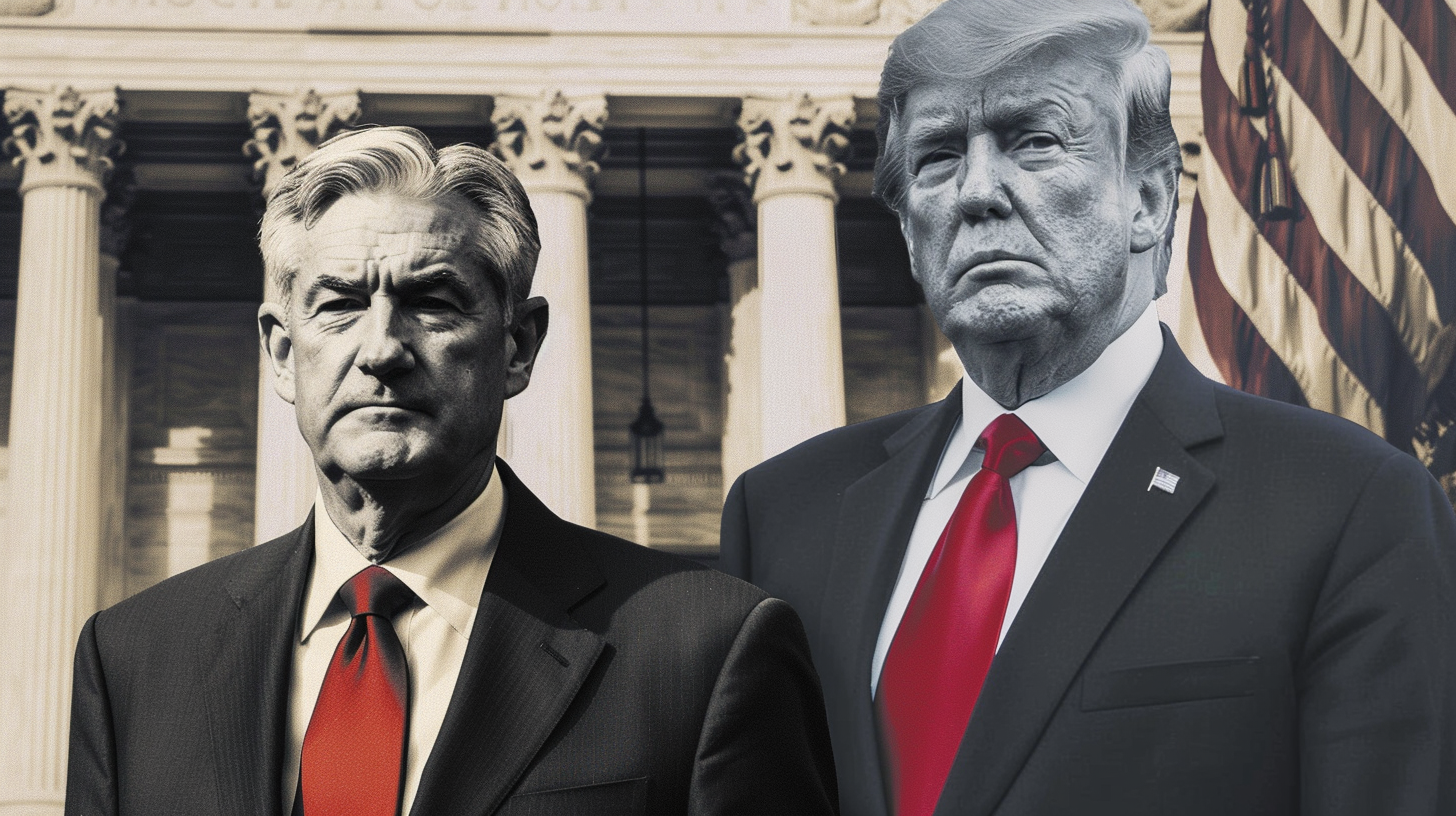Federal Infrastructure Proposal an Unnecessary Keynesian Boondoggle
As the GOP tax plan wound its way through Congress, we argued that it is not going to create the kind of economic benefits promised without some reduction in the size and scope of government. We don’t just need tax relief, we need government relief. But there don’t appear to be any serious efforts to cut spending or to reduce the size of the federal government on the horizon. In fact, it looks like D.C. is hurtling in the exact opposite direction. With tax reform in the rearview mirror, Pres. Trump has set his eyes on a federal plan to “fix” America’s infrastructure.
This is a Keynesian boondoggle of epic proportions. And as Ryan McMaken shows in the following article originally published at the Mises Wire, it isn’t even necessary. We don’t need a federal solution to the infrastructure problem. Not for practical purposes. And not to “stimulate” the economy. In fact, the borrowing and money printing that will be necessary to finance whatever plan the politicians in D.C. come up with will compound the country’s economic woes.
![]()
On December 19, an Amtrak train in Washington State killed three people and injured 100 others when it derailed and crashed into traffic lanes on a nearby highway.
The day before, Atlanta’s international airport suffered a disastrous power outage:
the whole airport, the world’s busiest, went dark for 11 hours. Thousands of flights were disrupted. For many hours nobody in authority attempted to explain—or even seemed able to explain—what had happened.
Both cases have been used to bolster claims that the US federal government needs to spend more on infrastructure.
In the wake of the Washington derailment, President Trump quickly took to Twitter to call for more government spending:
The train accident that just occurred in DuPont, WA shows more than ever why our soon to be submitted infrastructure plan must be approved quickly…
Meanwhile, USA Today declares that the Airport’s power outage has “demonstrated” the “nation’s state of disrepair.”
The assertion that there is an “infrastructure crisis” at all remains quite dubious. As just a recent example, we might note that in his tweet about the Washington State derailment, Trump neglected to mention that the derailed train was making its first run on brand new tracks as part of a $180-million expansion of the train system in the region. It was in no way a result of “crumbling” infrastructure.
But for the sake of argument, let’s assume that many railroads, airports, highways, and bridges need repairs, and that governments will be frequently involved in addressing these needs.
But that leaves us with another question: why is a local bridge a matter of national concern? Why must a New Yorker be taxed to fund a stretch of highway in Boise?
A common response to this is “well, the New Yorker might someday drive through Boise,” or “New Yorkers rely on goods via highways that go through Boise.” That’s interesting, but it’s already in the self-interest of people in Boise to ensure that goods and services can easily travel in and out of the metropolitan area. This is hardly something that needs to be pointed out to local residents and officials by federal bureaucrats.
Moreover, if Boise infrastructure ought to be funded by everyone who might trade with anyone in the region, then the realities of global trade and travel require that people in Tokyo be taxed to pay for a highway in Orlando. After all, those Japanese people might visit Disney World someday! Or they might purchase a good or service that originates in Florida.
States and Cities Already Have More than Enough Wealth to Construct Infrastructure
Also unconvincing is the claim that state and local governments do not possess the resources to fix bridges or build an airport. In a global context, every state in the US is among the wealthiest places on earth.
The GDP of Georgia ($531 billion) for instance, is larger than that of Sweden, which stands at $511 billion. Georgia’s GDP per capita ($50,900) places it above that of the Netherlands, and only slightly below that of Austrian and Sweden.
Similarly, the total GDP in Washington State totals $476 billion, which puts its total GDP well above that of Belgium, Austria, and Norway. Its GDP per capita is even higher than that in Georgia, and at $56,800 it is higher than the GDP per capita in Denmark, Singapore, and Australia.
And yet we’re meant to believe that the problem of fixing a train track is just too hard for Washington State and its nearly-500-billion-dollar economy to handle.
This, at least, is what Washington DC politicians, and the national news media would have you believe. State governments, local governments, and the private sector all just too dumb, powerless, or inept to pull off the inscrutably difficult task of building roads and airports. Sure, much smaller, poorer countries in Europe can do this all by themselves, but in North America, everything must be done with the “help” of Washington, DC.
To be sure, it may very well be that local politicians in Washington State or Georgia are too inept to maintain a railroad or an airport properly. Granted that, however, it hardly follows that bureaucrats in Washington, DC, are smarter or more competent. Nor does it follow that throwing more federal money at those already-well-funded state and local governments aren’t going to solve the core problem.
Why Everything Is Supposedly a Federal Problem Now
The real reason that every problem is now a federal one is that it’s good politics for politicians. It’s also often easier for federal policymakers to increase spending than it is for state and local officials.
This is why Donald Trump has continually harped on the issue of infrastructure spending since his campaign. It’s an easy way to buy votes and score points with voters by pledging to spend more on infrastructure. After all, everyone wants safe roads!
Unlike state and local politicians, however, Trump can pledge to increase spending on infrastructure (and an endless list of other things) while also pledging to cut taxes — or at least not raise taxes.
As one can imagine, this is a great place to be politically.
Trump and other federal politicians can get away with this because of the ease of increasing and sustaining deficit spending at the federal level.
State governments, on the other hand, often erect legal barriers to deficit spending.
In the US, 49 out of the 50 states have some form of balanced-budget mandate. In some cases, this mandate is merely in statute, but in 45 of them, the balanced-budget requirement is actually written into the state constitution. This means that in order to increase spending, debt must be explicitly increased, or taxes must be increased. A report from the National Council of State Legislatures states:
In some states that lack explicit language requiring a balanced budget, a generally observed practice of doing so is based on a limitation of state debt, interpretation of other statues or traditional practice. … [T]wo points can be made with certainty. Most states have formal balanced-budget requirements with some degree of stringency, and state political cultures reinforce the requirements.
The political culture in DC, on the other hand, is one in which the national debt continually grows and deficits occur year after year after year. In Washington, the attitude is “why do things the honest way (i.e., openly raising taxes) when you can just run deficits and heap a greater tax load on future generations?”
This habit of pushing more and more debt is also facilitated by the existence of a central bank that is willing to buy up federal debt while forcing down interest rates to keep debt payments low.
State and local governments, of course, can’t do this. Were they to continually pile on more and more debt, they would in most cases have to pay higher interest on their debt in order to find enough buyers. Interest payments would eat up state revenue, creating political problems for politicians.
The other dimension to this is the inflation tax. As the central bank buys up federal debt, it often does so with newly created money. This taxes holders of US dollars who now have less purchasing power. This is a form of taxation, of course, but since few taxpayers see it as taxation — and since the rate of taxation for each household is essentially impossible to precisely calculate — it becomes a politically feasible means of exploiting the taxpayers without having to explicitly raise tax rates.
States which lack central banks must raise taxes the old-fashioned, non-stealthy way. As Ludwig von Mises pointed out, raising taxes out in the open is politically unpopular, and it’s always more attractive to elected officials to raise tax revenue through other means, such as through inflation.
Not surprisingly, we see that in recent years, federal spending as outpaced state and local spending.
Since the dot-com peak of 2000, federal expenditures have increased 116 percent at the federal level. For all state and local governments combined, however, expenditures have increased 89 percent.
The real story, here, though, is in debt levels. According to an analysis from the Tax Foundation, the highest per capita debt level among the states is found in New York where state and local governments owe $17,400 per capita.
All other states (including the local governments therein) have smaller combined debt totals. The per capita debt in Texas, for example, is $10,400.
All of these numbers — which are from 2012 — pale in comparison to the total US debt load per capita. Using 2012 numbers for US debt, we find that federal per capita debt was around $51,000, or nearly three times that of the most indebted state. (As of 2016, this number is closer to $61,000).
Meanwhile, few voters seem terribly concerned about these debt levels at the federal.
So, why go through the trouble of raising state and local taxes to repave a highway, when the federal government can just “solve” the problem with newly-printed money and more deficits? Just declare any problem to be a national problem, and then spend away.
Get Peter Schiff’s most important Gold headlines once per week – click here – for a free subscription to his exclusive weekly email updates.
Interested in learning how to buy gold and buy silver?
Call 1-888-GOLD-160 and speak with a Precious Metals Specialist today!





 Beneath the veneer of headline job gains, the American economy teeters on the brink: native employment dwindles as part-time and immigrant jobs surge. Government hiring camouflages looming recession warnings. Inflation and political blunders worsen the crisis, fueling public outrage at the establishment’s mishandling of the economy.
Beneath the veneer of headline job gains, the American economy teeters on the brink: native employment dwindles as part-time and immigrant jobs surge. Government hiring camouflages looming recession warnings. Inflation and political blunders worsen the crisis, fueling public outrage at the establishment’s mishandling of the economy. On April 5 1933, Franklin D. Roosevelt abandoned the gold standard, wielding questionable legal power amidst America’s dire economic depression. His whimsical approach to monetary policy, including coin flips and lucky numbers, unleashed unprecedented inflation and price increases that have since amounted to nearly 2500%. Our guest commentator explores this tragic history and the legacy […]
On April 5 1933, Franklin D. Roosevelt abandoned the gold standard, wielding questionable legal power amidst America’s dire economic depression. His whimsical approach to monetary policy, including coin flips and lucky numbers, unleashed unprecedented inflation and price increases that have since amounted to nearly 2500%. Our guest commentator explores this tragic history and the legacy […] Welcome to the world of modern economics where the term “inflation” no longer signifies the increase in the quantity of money, but has evolved into a plethora of buzzwords. From “shrinkflation” to “greedflation,” these new terms and semantic shifts are by no means harmless but a manipulation of popular sentiment. Von Mises said they play […]
Welcome to the world of modern economics where the term “inflation” no longer signifies the increase in the quantity of money, but has evolved into a plethora of buzzwords. From “shrinkflation” to “greedflation,” these new terms and semantic shifts are by no means harmless but a manipulation of popular sentiment. Von Mises said they play […] Assuming CPI measurements are not understatements, the dollar’s value has plummeted by a staggering one-fifth since 2020, yet, rather than acknowledging its role in fueling this economic turmoil, the Biden administration deflects, casting capitalism and corporate greed as the villains. The latest February CPI data show more signs of the upcoming inflation bloodbath.
Assuming CPI measurements are not understatements, the dollar’s value has plummeted by a staggering one-fifth since 2020, yet, rather than acknowledging its role in fueling this economic turmoil, the Biden administration deflects, casting capitalism and corporate greed as the villains. The latest February CPI data show more signs of the upcoming inflation bloodbath. The Federal Reserve is often viewed as a neutral guardian of the economy, tasked with safeguarding employment and ensuring stable prices. However, the Fed is run by individuals who, like anyone else, are swayed by certain motivations. Do the people behind the Fed truly have the incentive to remain impartial? Our guest commentator demystifies the […]
The Federal Reserve is often viewed as a neutral guardian of the economy, tasked with safeguarding employment and ensuring stable prices. However, the Fed is run by individuals who, like anyone else, are swayed by certain motivations. Do the people behind the Fed truly have the incentive to remain impartial? Our guest commentator demystifies the […]